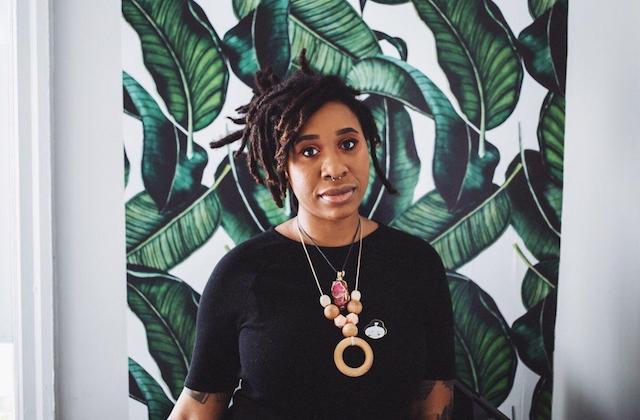'Breaking' Presents: Loveis Wise, An Illustrator Making Her Media Matter

Name: Loveis Wise
Hometown: Washington D.C.
Medium: Illustrations that capture people of color of varying skin tones and shapes with nuance and individuality.
Why You Should Care: Wise proves that you don’t need to compromise your aesthetic to make art that reaches thousands. The Philadelphia resident began successfully channeling her talents into projects for clients throughout the corporate, activist and media worlds all before finishing college.
A post shared by Loveis Wise (@cosmicsomething) on May 11, 2018 at 10:24am PDT
Wise, whose first name is pronounced “love is,” began drawing in fits and starts while growing up in D.C. “I wasn’t always so good at it,” she says, laughing. “I wasn’t technically trained and very self-conscious about the way that I drew.”
She overcame this self-doubt toward the end of high school, when she decided to pursue an art degree. Wise made this choice despite the doubts of her family, who she says “didn’t know anyone who was an artist and could live off of creating pictures.”
“I grew up impoverished and didn’t have many resources,” she says. “I knew I wanted to end that cycle and do something that could help me live a comfortable life, but also do something that I cared about.”
A post shared by Loveis Wise (@cosmicsomething) on Mar 8, 2018 at 5:51am PST
That journey took her to the University of the District of Columbia, where she studied multiple types of studio art. That general focus narrowed to illustration after transferring to The University of the Arts in Philadelphia, which she graduated from in May 2018. “I was in a digital painting class, and the teacher asked, ‘Why aren’t you an illustrator?’” Wise recounts. “I thought that illustration was, ‘You make this book or concept art for movies.’ Taking [illustration] classes opened my eyes to where my work could go.”
The artist created a formal portfolio in 2017, during her junior year. She sent it to Women Who Draw, a digital pipeline for "women, women of color, LBTQ+ and other less visible groups" that is gender nonconforming- and trans-inclusive. Art directors used the platform to contact Wise, and she booked her first major freelance job with Refinery29.
Hey lovelies, check out my new collab with @refinery29 for February ??? AD: Elliot Salazar
A post shared by Loveis Wise (@cosmicsomething) on Feb 1, 2017 at 11:15am PST
That first gig snowballed into a wealth of opportunities with clients as varied as Philadelphia Printworks, BuzzFeed, Forward Together, the March of Dimes and REI. In May, she achieved something that few artists, let alone those busy finishing school, ever do: landing her art on the cover of The New Yorker.
A post shared by Loveis Wise (@cosmicsomething) on May 28, 2018 at 6:38am PDT
The cover incorporates motifs that Wise captures in a lot of her commercial, advocacy and personal work: Black and other women of color, often situated in the outdoors, with varying body shapes and hues. Some images, like The New Yorker cover, use shades of brown that clearly indicate race. Others, like one she designed for REI's Outessafest, instead feature characters in shades of purple, pink and teal. When asked if she uses these otherworldly colors to signify differences in race, she replies, “in a way.”
“I put these women who I grew up with, or women that I appreciate, in these spaces, even when it isn’t about their Blackness,” she elaborates. “For so long, we didn’t see Black people existing in art, when it wasn’t even about politics or the color of their skin. I just want it to be normalized because it is normal.”
A post shared by Loveis Wise (@cosmicsomething) on Mar 26, 2018 at 8:16am PDT
She shows her concern for Black women’s resilience and empowerment in other ways as well. The list of advocacy causes and organizations on her resume maps the issues that are important to her. “Self-care and mental health hit very close to home for me,” she says. “To make images about taking care yourself, or showing love and support to yourself and those around you—I definitely have a huge need to create more pieces around this, and get a little more political with my work.”
Wise acknowledges that her art, regardless of the intended audience, has landed in prominent spaces defined by Whiteness. She says that the capacity to uplift marginalized perspectives in those venues guides many of her professional choices.
“I remember not being able to see myself in certain spaces, or feeling like I couldn’t do it,” she recalls. “Now that I know it’s possible, I want other people to feel they can infiltrate those spaces, too.”
See more of Wise’s illustrations on Instagram and Etsy, then go read our past Breaking features.
